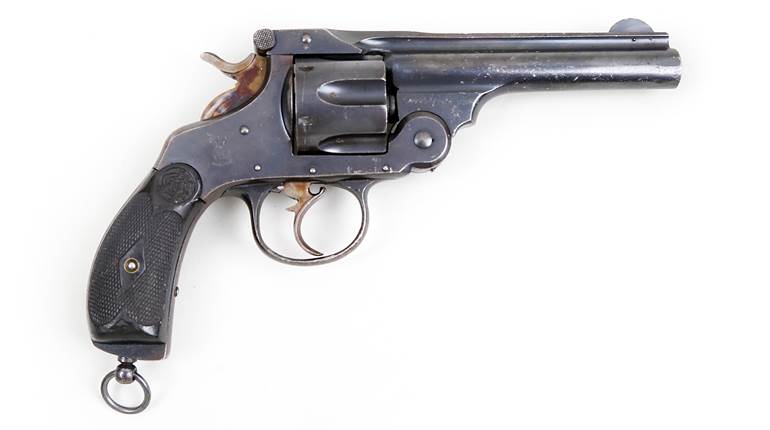
The Model 1895 Austro-Hungarian straight-pull infantry rifle was something of an anomaly. In the usual order of things, an ordnance board was more inclined to first develop an arm for its foot troops and then one for the mounted service. In the case of the ’95, however, in effect, a carbine provided the original inspiration. Here’s what happened.
The Austrians were looking at straight-pull designs contrived by master gun inventor Ferdinand von Mannlicher as early as 1884. The first involved a rifle with an interesting “gravity feed” arrangement. This was later modified (in the Repetier-Gewehr M.85) to handle an en bloc clip that, in the manner of the much-later M1 Garand, ejected from the top of the action when empty.
Rather than the more conventional turnbolt, Mannlicher came up with a straight-pull mechanism that allowed the action to be manipulated much more rapidly, later resulting in the system’s nickname, Ruck-Zuck (very quick).
This rifle, while innovative, was not wholly satisfactory, so a scant year later Mannlicher came out with a variant (M.86) that employed an open clip that was pushed into the magazine atop an integral spring-loaded follower in the box magazine. When all rounds were expended, the clip dropped out through an opening in the bottom of the magazine.
Originally chambered in an 11 mm blackpowder cartridge similar to that used in the single-shot Austrian Werndl, the trend at the time toward smallbore arms led to the adoption of an 8 mm round, still employing blackpowder. Initial rifles were converted to handle this load, and new ones were also made. The cartridge itself was updated in 1893 to handle smokeless powder, resulting in the 8x50 mm R round.
Mannlicher decided a new arm was in order and, in 1890, came out with a wholly updated straight-pull carbine. Differences from its predecessors included a rotating, separate bolt head and other modifications that made the rifle virtually jam-proof. The magazine arrangement, while similar to that of the earlier models, was now connected to the front of the trigger guard, the clip release button being placed on the inside of the forward portion of the trigger guard.
This carbine was so well-received that it was decided to make a few minor changes and stretch it into a full-length infantry rifle. Manufactured at Steyr in Austria and in Budapest, Hungary, the sleek new arm measured slightly more than 50" overall, with a 30.12" barrel. It weighed some 8 lbs. Rifles made at Steyr sport a “K” acceptance code, and those from Budapest bear an “R.”
The rifles were also marked on the receiver ring with the 1895 model designation and place of origin. A small double eagle (Austria) or shield (Hungary) and the last two digits of the date of acceptance were stamped on the barrel, just in front of the action.
On original, unaltered versions, graduations on the rear sight were in schritt, a measurement derived from a “pace” of 29½". As well, the rifle was supplied with a very modern-looking 9½"-bladed knife bayonet.
The arm proved to be reliable and robust. Over its relatively long service life (it was used by Austria and others well into World War II) it would also be produced in a carbine version as well as short stutzen, the main difference between the two being the presence of a bayonet lug and stacking swivel on the latter, as well as a different arrangement of sling swivels. Too, in 1930, when Austria adopted the 8x56 mm R cartridge, large numbers were converted to handle that round. Today, it seems that carbines and stutzen in the updated chambering are the ones usually found on the market, with unaltered, early infantry rifles being considerably more scarce—especially in good condition.
While it is possible to find the common versions of 1895s selling in the $300 to $500 range—more if German waffenampt-marked—a good, World War I-dated, original infantry long rifle, such as the one seen here, is easily worth $1,000.
Gun: Model 1895 Mannlicher Rifle
Manufacturer: Waffenfabrik Steyr (Austria)
Chambering: 8x50 mm R Mannlicher
Manufactured: 1914
Condition: NRA Excellent (Antique Gun Standards)
Value: $1,000















![Auto[47]](/media/121jogez/auto-47.jpg?anchor=center&mode=crop&width=770&height=430&rnd=134090788010670000&quality=60)



















